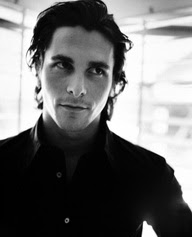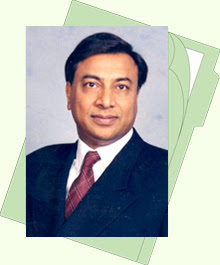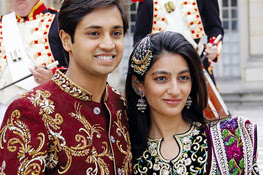The first Active Pharmaceutical Ingredients (API) manufacturing facility was commissioned in June 1985 in Bollaram. In 1986, the company went public with listing on the Bombay Stock Exchange. DRL began its first commercial production of API in 1985. It produced Methyldopa, a hypertension drug which was not available in the Indian markets. Methyldopa was supplied to Merck, Sharp, Dhome (MSD), and was exported to West Germany, Yugoslavia, Bangladesh, Kenya and Canada. The formation of Stangen Pharmaceuticals signals the beginning of Formulation Operations in 1987. Cheminor Drugs obtained its first USFDA approval for Ibuprofen API in the same year and the company started exporting the drug to USA. Its subsidiary, Globe organics also started operations in that year. DRL obtained USFDA approval for Methyldopa. It acquired Benzex Laboratories, which started manufacturing active ingredients of Ampicillin and Cephalexin.
In 1990, DRL exports Norfloxacin and Ciprofloxacin to Europe and Far East. It becomes the first Indian pharmaceutical company to do so. Diltiazem and Famotidine were introduced by Cheminor Drugs for the first time in Indian markets. In the same year, it commenced First formulation exports to Russia with a field force in Moscow.
On 22nd April 1991, DRL's brand of Omeprazole, Omez, was launched. It was DRL's first 100-crore brand. It revolutionized the treatment of acid-peptic disorders. Today, Omez is the top brand of Omeprazole in 11 countries. On 28th December 1991, commercial production started at Pydibheemavaram API plant.
In 1993, Dr. Reddy's Research Foundation (DRF) was established jointly by DRL and Cheminor Drugs. It was the first company to initialize drug discovery programs. The Department of Scientific and Industrial Research, Ministry of Science and Technology, Government of India has recognized DRF as a scientific and industrial research organization. In the same year, they launched an anti-emetic drug, Domperidone. The launch of Reddy - Cheminor SA at Paris gave a focused thrust on European markets.
In 1996, a finished dosages facility was constructed at Bachupally, Hyderabad. This was to facilitate expansion of its generic business and entry into highly regulated US markets. A cargo aircraft of Uzbekistan Airways was chartered to airlift 18,000 kgs of life saving medicine worth US$ 1.25 million. This was a first for DRL.
On March 1st 1997, DRL licenses its discovery DRF 2593 (Balaglitazone) to Novo Nordisk A/s of Denmark. It is one of the most potent glitazone. DRL is the first Indian pharma company to out-license an original molecule. In December 1997, the US Patents and Trademarks Office granted the first patent to DRF for the discovery of Troglitazone Polymorphs, a molecule with anti-diabetic properties. Dr. Reddy's files its ANDA with the United States Food and Drug Administration for Ranitidine. DRL expands its global outreach by starting Reddy Biomed Ltd in Moscow in March 1997; Joint venture in Brazil in September 1997 and Reddy Pharmed a joint venture in Tashkent In October 1997. In 1999, DRL acquired American Remedies Limited (ARL) which enhanced DRL's focus on improving efficacy of co-prescribed drugs. ARL's brands like Mucolite, Antoxid, BioE, Becozinc, GLA and Optisulin have become part of DRL's portfolio. On December 11, 2000, with the merger of Cheminor Drugs (CDL), DRL became the third largest pharma company in India. On April 11, 2001, DRL became the first Asia Pacific pharma company outside Japan to be listed on the New York Stock Exchange with the symbol "RDY". DRL kicks off by having its stock oversubscribed, and becoming the best performing IPO for the year.
DRL launched Fluoxetine 40 mg capsules on August 3rd 2001. It became the first Indian pharma company to obtain 180-day exclusive marketing rights for a generic drug in the US market.
In 2002, DRL acquired BMS Laboratories Limited and Meridian Healthcare (UK) Limited. These companies have fully-integrated manufacturing facilities for oral solids, liquids and packaging in London and Beverly. Dr. Reddy's new Technology Development Centre (TDC) became operational on 6th May 2002. In January 2003, DRL launched Ibuprofen in the US. It became the first generic product marketed under the "Dr. Reddy's" label in the US. It also facilitated the company to strengthen and sustain US generic business. On September 15th 2003, DRL released its "Corporate Safety, Health & Environment (SHE) Report for the year 2002 - 2003". It became the first Indian pharma company to release an SHE report.
In 2005, DRL acquired Roche's API business at Cuernavaca, Mexico. The site has state-of-the-art manufacturing facilities and is approved by USFDA and other international regulatory agencies. DRL has added unique steroids manufacturing capabilities to its already existing APIs.
DRL acquired Betapharm in 2006, the fourth largest generic pharma company in Germany. This is the largest acquisition at a value of € 480 million in cash. Dr. Reddy's ANDA gets USFDA final approval for Ondansetron Hydrochloride Tablets, 4 mg, 8mg, 16 mg and 24 mg. Dr.Reddy's revenues touched USD 1 billion mark in December 2006 making it the fastest Indian pharma to do so.
On 27th April 2007, Dr. Reddy's launched Reditux™, their brand of rituximab. It is also the world's first monoclonal antibody (MAb) biosimilar used in the treatment of Non-Hodgkin's Lymphoma. Over a 100 leading oncologists from the country attended the launch. Dr.Reddy's revenues for the financial year 2006-07 were USD 1.5 billion. Dr. Reddy's and Rheoscience commence the Phase II clinical trials of Balaglitazone (DRF 2593). It is a new TZD for treatment of diabetes mellitus. This trial will investigate the safety and efficacy of the drug.
Dr.Reddy's acquires a share of Dow Pharma Small Molecules business which is an associate of its UK sites in April 2008. The Cambridge site has chiral and biocatalysis technology facilities. The highly specialized knowledge of Chemocatalysis and Biocatalysis is proving valuable for innovator companies globally.
Dr. Reddy's acquired BASF's Shreveport facility in Louisiana in 2008. It is a pharmaceutical contract manufacturing business that manufactures and packages prescriptions and OTC pharma products. This acquisition helped Dr. Reddy's to expand its activities to North America and also its ability to supply generic products to US government agencies. Dr. Reddy's announced its wholly-owned subsidiary, PromiusTM Pharma, LLC in Bridgewater, NJ on 22nd September 2008. The unit will focus on US branded dermatology market. A strategic alliance with GlaxoSmithKline plc (GSK) was announced in 2009. This was done to facilitate developing and marketing select products across emerging markets outside India.
DRF, Hyderabad merged with Aurigene Dr. Reddy's wholly-owned drug discovery subsidiary in Bangalore. This resulted in a reorganization of drug discovery operation effective from 1st June 2009. The company will operate from two sites – Hyderabad and Bangalore.
| 







